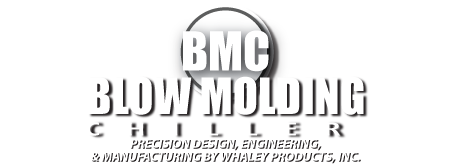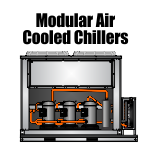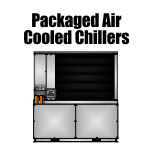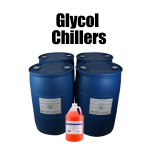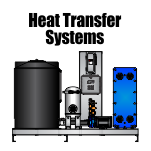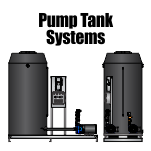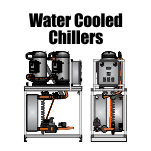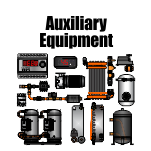Blow Molding Chillers
WPI stepped onto the chiller scene in 1993 as a straight plastic cooling equipment manufacture. Nowadays, Whaley provides equipment for many applications. Blow molding has long been the go-to process for producing plastic liquid containers.Portable chillers, modular chillers, split systems, closed loop chillers, and packaged chiller systems are just a few solutions for blow molding machines.
40#/HR of Polyolefins = 1 Chiller Ton Cooling Required
Application Description:
The bottled beverage industry relies heavily on blow molding. Since the introduction of bottled water into the market in the 90’s, it has become a household norm. Blow molding a two-liter soda bottle requires a preformed piece called a parison. This parison is usually extruded from a plastic injection mold placed very close to the blow molding machinery. The warm parison looks like a upside-down plastic test tube, with a preformed collar and threads for the cap at the bottom. The parison is mechanically loaded onto a stand and two sides of a bottle-shaped metal mold come together around it.
Before the parison cools down, a hollow ramrod is injected into its center and pushed to the top of the mold, stretching out the warm plastic preform as it goes. Compressed air is then forced out in controlled low-pressure stages through the hollow ramrod. The plastic form is forced out to the sides of the mold. Because the stretching is performed evenly, the plastic remains uniformly thin and strong. The soda bottle assumes the shape of the mold and is dropped out of the blow molding machine as the two mold halves separate. A new parison is extruded and the entire blow molding process begins again. The actual manufacture of a soda bottle takes only a few seconds.

There are other forms of blow molding, but the general principle is the same. The plastic acts much like a latex rubber balloon — as long as the pressure from the compressed air is controlled, the material will expand uniformly and form the shape of the mold. This requires a fair amount of skill and experience on the part of the blow molding engineers who design new pieces of equipment.
To determine the size of chiller you’ll need for your plastic process cooling application, follow this formula:
1. Calculate the pounds of material per hour being processed.
2. Determine how many pounds per hour are required for each ton of cooling capacity on Chart 1.
3. Determine if the extruder or any auxiliary equipment will require chill water. If not, go to step #6.
4. Size the equipment cooling capacity based on Chart 2 and Chart 3.
5. Combine the process and equipment cooling requirements.
6. Size your chiller by rounding up to the closest standard unit.
For example, what size chiller is needed for a polypropylene molding operation that incorporates a 6oz. “Shot Size” and a 18 second cycle time with a 3 H.P. hydraulic motor?
1. 6oz. / 18sec. = 19.99 oz/min (20.00 oz./min) 20 oz. / min x 60 min. = 1200 oz/hr 1200/16 = 75 lbs. / hr
2. Polypropylene requires 1 ton of cooling capacity for every 35 lbs./hr processed 75 lbs. ÷ 35 lbs. = 2.14 tons of cooling
3. A hydraulic motor requires 1 ton/HP of cooling capacity
4. 3 HP x .1 ton/HP = .3 ton of capacity
5. Combine process & auxiliary cooling requirements 2.14 tons + .3 ton = 2.4 tons
6. This application will require a 3-ton unit
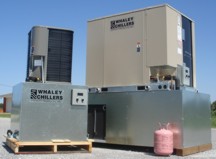 Packaged Chillers Non-expandable (integrated pump tank) 1.5Ton – 20Ton Single / Dual Circuits Single / Dual Pumps |
 SAE Series Modular Chillers Expandable (pump & tank on separate skid) 1.5Ton – 200Ton Single / Dual Circuits |
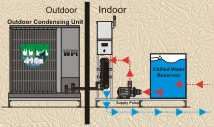 SAR Series Split Chillers Expandable (Outdoor Condensing Unit) (pump, tank, evaporator on indoor skid) 1.5Ton – 200Ton Single / Dual Circuits |
